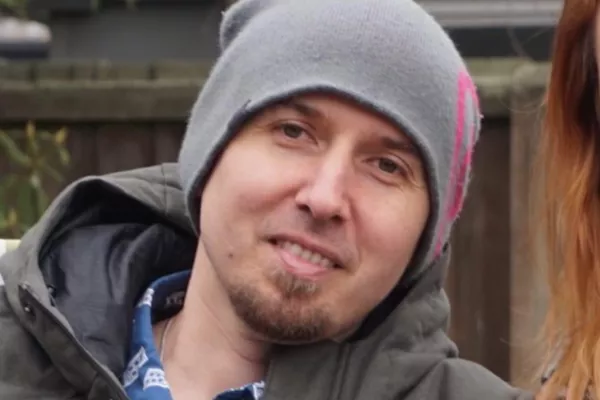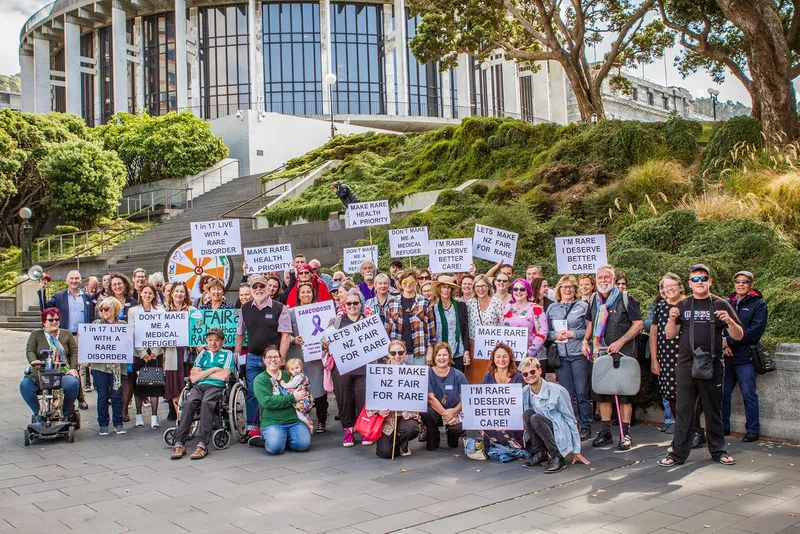Phil's story
16 Jul 2025
For eight years, I was married to someone with narcolepsy. For the last seven, we’ve been divorced co-parents and friends. But it’s only in the last two — maybe two and a half — that she’s had an actual diagnosis.
Looking back over the fifteen years we’ve shared a life, it’s hard not to see it all with a new kind of clarity. The signs were there — in neon, some of them. A diagnosis, treatment, support, strategies, a GP who’d stumbled across the right journal articles — any of those might’ve changed the shape of our family life. I hope Napish can help do that work, so other families don’t have to go through what we did, wondering what invisible force is eroding things you thought were solid.
In 2011, we were a young family — three kids under five, two working parents, a house that was almost never clean, and a kind of hopeful chaos. We were busy, sure, but we were in it together. Still, M was always tired. Not just end-of-the-day tired — she’d crash hard after work, nap for hours, or fall asleep mid-conversation. Her presence in the family became… partial. Fuzzy around the edges.
She was chugging litres of V and coffee just to stay upright. The doctors said it was her hypothyroidism. (And inevitably, her weight — which seems to be blamed for everything short of planetary collapse. If they could’ve brought back the diagnosis of “hysteria,” I think they would’ve.) But her thyroid levels were stable, her meds were working, and still — she couldn’t keep her eyes open. That should’ve been a red flag the size of a bed sheet, but nobody waved it.
If you’re someone with narcolepsy, this might sound familiar. She’d get disoriented and irritable when woken up — not in a grumpy-morning-person kind of way, but in a panicked, confused way. She once fell asleep while driving. She missed out on weekend outings, school things, the little glue moments of family life — not because she didn’t want to be there, but because her body simply said no.
And yet, at work, she was this curious contradiction: brilliant, effective, respected — promoted to more senior roles in record time — and also the person who would fall asleep at her desk and carry a constant,crushing fear of being found out or fired.
In our case, there’s good news and hard news.
The good: she finally got diagnosed. Her employer — bless them — worked with her to build a flexible, sustainable work plan. She’s still a badass, but now it’s on her terms, not whatever cruel joke the 9-to-5 model plays on people who experience life differently.
The hard news: narcolepsy is one of the reasons our marriage didn’t survive. It wasn’t the only reason, and it wasn’t about blame. But it mattered. And at the time, without a diagnosis, it was so easy to misread everything.
You wonder: why isn’t my partner spending more time with the kids? Why is she napping again — and why does she get mad when I wake her, like she asked me to? Why don’t we go on adventures together like we used to? Why is so much of the household weight falling on me?
Each of those things, standing alone, just looks like normal relationship wear and tear — like distance, or selfishness, or someone who’s not pulling their weight. But through the lens of narcolepsy, they look like symptoms. They look like something you can adapt around, once you name it.
With understanding — not just for the person with narcolepsy but for the partner, the kids, the employer, the GP — comes the ability to shift. Strategies. Compassion. Shared language. And then, slowly, something more like ease.
I hope GPs get better access to information, and faster pathways to diagnosis, so that people with narcolepsy don’t spend a decade wondering if they’re lazy or broken — or making the people who love them feel that way too.
Sleep disorders don’t just mess with rest — they can quietly unravel relationships, work lives, and self-esteem. But they don’t have to.
Not if we talk about it.


